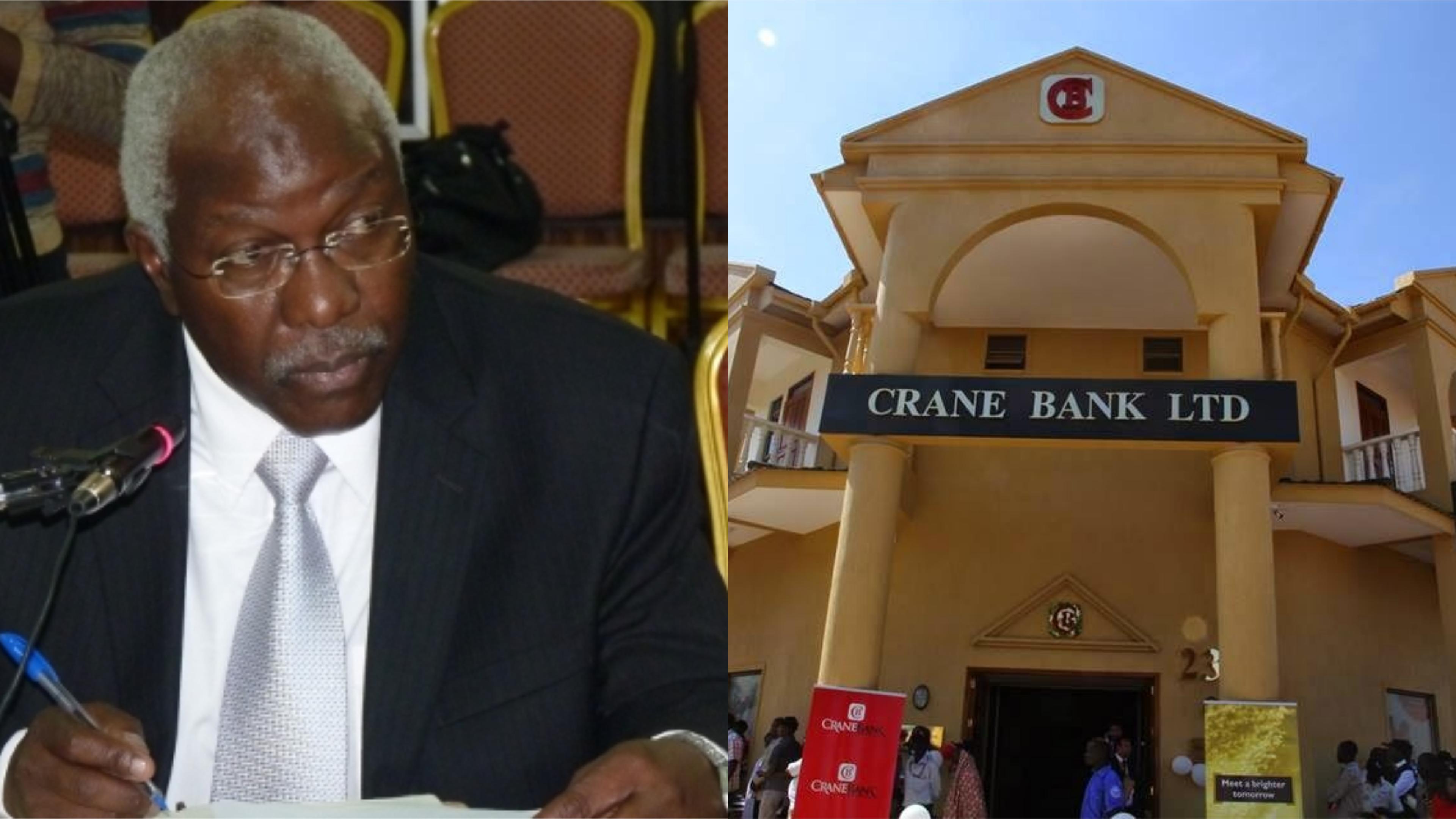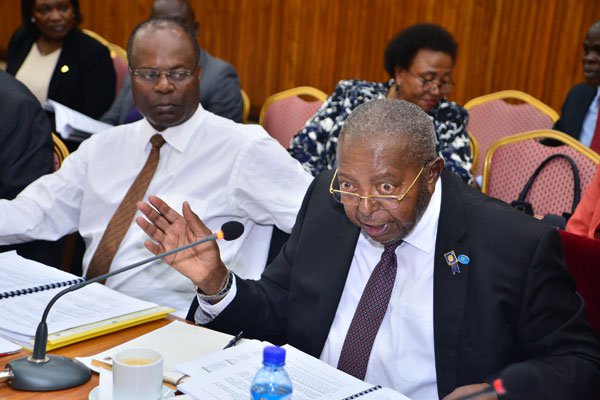By Andrew Irumba
Parliament: Fresh and confidential information supplied by BoU officials to parliamentary COSASE committee investigating the alleged irregularities at the central bank highlight weaknesses in the accountability of billions of shillings injected in the seven closed commercial banks.
In the case of Crane Bank Ltd (CBL) saga, after Bank of Uganda (BoU) officials failed to account for Shs478b spent after its takeover, the MPs on the committee on Commissions, Statutory Authorities and State Enterprises (COSASE)have instructed the Auditor General (AG), Mr John Muwanga, to do a forensic audit into the liquidity support to Crane Bank Ltd (CBL).

The money in question (Shs478b) was requested by the BoU statutory administrator, Mr Edward Katimbo Mugwanya, and approved by former director for commercial banks supervision Justine Bagyenda, who according to AG findings, would direct the executive director for Finance or Director for Currency to transfer funds to CBL under BoU management.
BoU officials told the parliamentary committee members chaired by Bugweri County MP Abdul Katuntu that the un-accounted for money was used to “prevent instability in the banking system”.
The payments, according to confidential documents, before COSASE would then proceed through either a Uganda Shillings CBL funding account number 317.144033.1 or a dollar CBL funding account number 317.144034.1 in BoU.
Funds to cater for outward telegraphic transfers would be credited on account number 3582025085001 in Standard Chartered Bank in New York.
The BoU team took over CBL on October 20, 2016 and the following day, they immediately commenced the injection of liquidity support to CBL up to January 9, 2017.
This was also done before BoU officials engaged Price Waterhouse Coopers to compile inventory of assets and liabilities of CBL.
The details of the assets and liabilities according to the lawmakers on COSASE should have guided the BoU intervention in CBL.
In his August 2018 report to Parliament, Mr Muwanga said; “I observed that BoU did not have a documented process of injection of funds to support CBL operations during the statutory management.”
But the BoU Governor, Prof. Emanuel Tumusiime Mutebile explained that the disputed expenditure “was the cost of ensuring that Crane Bank did not collapse in a disorderly manner, threatening chaos in the banking system and the wider economy and ensuring that its customers retained access to their deposits and to banking services”.
But the absence of accountability documents has weakened Mr Mutebile’s explanation.
According to available documents so far seen by TheSpy Uganda, Shs478b in question was spent between October 20, 2016 and January 27, 2017.
BoU took over Crane Bank because the bank’s capital had fallen below the 50 per cent legal requirement under the law.
The Governor accordingly appointed Mr Edward Katimbo Mugwanya, a former director at BoU as the statutory administrator of Crane Bank.
While appearing before COSASE, Mr Mugwanya admitted that as a statutory manager for Crane Bank, he had bungled up the calculations on how the money that was injected, leaving the committee with no option but to ask AG to do a forensic audit into the expenditure of Shs478b.
“We want the Auditor General to conduct a forensic audit into Shs478b BoU team spent on Crane Bank before it was sold to dfcu bank. We just want to satisfy ourselves that this money was actually required, and whether it was used to pay customers of Crane Bank or spent on other things,” Katuntu said.
Although CBL needed only Shs172b to re-capitalize itself and keep it afloat in business, BoU officials allegedly spent Shs478b to close it out of business.
Earlier, on October 16, 2016, CBL, formerly owned by city tycoon Dr.Sudhir Ruparelia, had applied for a loan of $115m from BoU as lender of the last resort to help sort out CBL immediate and longer term liquidity issues.
However, on October 17, 2016, BoU approved only Shs79.2b repayable over one year and attached conditions that the facility be solely secured by third party collaterals of substantial value and BoU rejected branch premises as security for the loan.
It is not clear why central bank officials blocked the Crane Bank application of $115m (about Shs390 billion at that time) and opted to spend more than Shs478b before selling CBL to dfcu at Shs200 billion.
It was also discovered that actually BoU not only sold Crane bank cheaply (Shs200B) but also sold it on credit!
On October 19, 2016, CBL appealed to BoU to reconsider their position but they refused.
Scrutiny of the confidential documents to COSASE shows that the decision to inject Shs478b into CBL was done without valuation of assets and liabilities, in violation of Section 95 (3) (a) and (b) of Financial Institutions Act, 2004.
In addition to lack of BoU valuation, Mr Mugwanya, the statutory manager, made requests for liquidity support without submitting reports to the Governor.
In his response to the irregularities in the closure of the seven commercial banks under scrutiny, Governor Mutebile, who had earlier defended the closure of CBL, admitted that mistakes were made and promised to fix the problems at the Central Bank.
“It has been a learning process not only for the management but also our staff who have followed the proceedings closely and I am confident as a result, we will review the bank’s processes and policies in order to strengthen our capacity to perform the functions of commercial banks better,” Mr Mutebile said.
“The staff changes [at the central bank] which were made in February 2018 were made to address some of the challenges that we knew but which have now become all evident in the last few weeks,” he added.

In the coming forensic audit, Mr Muwanga will be seeking to know the details of the account BoU officials used to inject Shs466.2 in CBL and an additional Shs12.2b spent on other intervention costs.
The AG, according to sources, has been tasked to examine CBL operations under BoU management to determine that the funds injected reflected the liquidity shortfall at the time.
He will also review and verify approved requests for funds to CBL together with supporting schedules, including payments made by CBL under BoU management to the bonafide account holders and other respective beneficiaries using injected funds.
The new audit will also assess how the service providers, including appointment of external lawyers were appointed and whether there was value for money.
The closed banks include; Teefe Bank (1993), International Credit Bank Ltd (1998), Greenland Bank (1999), The Co-operative Bank (1999), National Bank of Commerce (2012), Global Trust Bank (2014) and Crane Bank Ltd (CBL) that was sold to dfcu in 2016.





